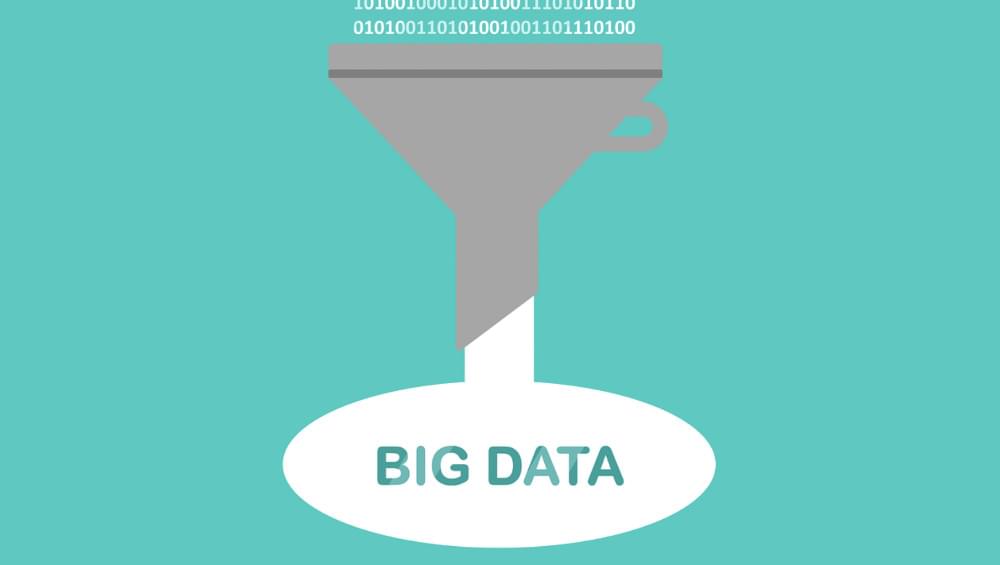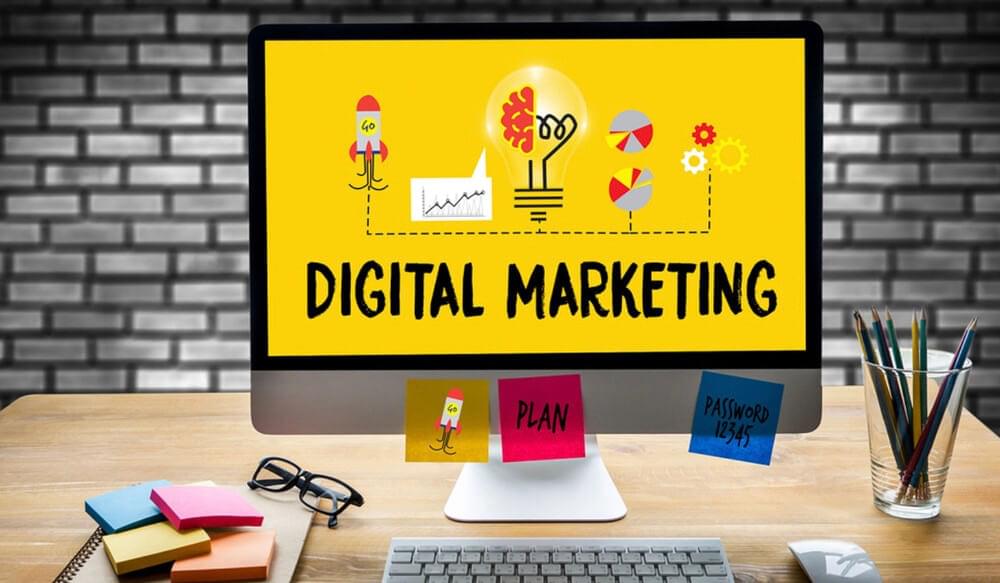Due to the increase in transactions, businesses have created a huge repository of data containing these transactions. Consequently, business information, insights, and intelligence are necessary. Business managers made data-driven, fact-based decisions rather than based on experience or institution. Building intelligence around the business objectives and their operational nuances was successful.
Businesses have moved towards a digital era by automating their process flows over the past decade. Big data applications can reveal hidden patterns and trends for companies that want to better understand their users’ and customers’ behaviors. Companies can use these insights to find innovation directions and provide competitive advantages by offering products and services before the competition.
Throughout this article, we will discuss big data examples in general and big data analytics and examine seven different big data application examples.
What is Big Data?

Data that has a greater variety arrives at a greater rate and contains a greater volume is referred to as big data. In other words, this is what is known as the three Vs. Data sets that are large and complex, especially those that come from new sources, can be described as big data. The data sets are so large that traditional data processing software cannot handle them. However, these massive volumes of data can solve previously impossible business problems. To effectively harness these large data sets, organizations need to employ innovative data extraction methods. Efficient web scraping requires not only technical skills but also a solid foundation in data processing and analysis to derive meaningful insights. By combining these skills, businesses can unlock the full potential of big data and drive growth.
Big Data Analytics
Big data analytics involves examining big data to uncover information that can assist organizations in making informed business decisions, such as hidden patterns, correlations, market trends, and customer preferences.
Organizations can analyze data sets and gather new information using data analytics technologies and techniques. Business intelligence queries provide answers to essential business intelligence (BI) questions.
In the context of analytics, big data analytics is a form of advanced analytics which involves complex big data applications and examples accompany advanced features such as predictive models, statistical algorithms, and what-if analyses, which are powered by advanced analytics systems.
Big Data Analytics: Why Is It Important?
By utilizing big data analytics systems and software, organizations can make data-driven decisions that will improve business outcomes by making data-driven decisions. Several benefits may arise from this, including more effective marketing, new revenue opportunities, customer personalization, and improved operational efficiency. When utilized effectively, these benefits can provide a competitive advantage over competitors.
Benefits of Big Data Analytics
Analytics based on big data can provide the following benefits:
• A capability to analyze large amounts of data from many different sources, in various formats and types, in a short time.
• Strategic decision-making can be improved by understanding supply chain systems, operations, and other aspects of strategic planning.
• Efficiencies and optimizations in business processes can result in cost savings.
• It can lead to better marketing insights and product development information if you understand customer needs, behavior, and sentiment better.
• With large data sample sizes, new, better-informed risk management strategies can be developed.
Top 7 Big Data Application Examples For 2025
In this article, we will list the top 7 industries that employ big data applications in their respective fields:
1. Marketing and Advertising with Big Data

Big data analysis can be of great use in several areas of marketing and advertising, and this is one of them. You have likely seen the use of big data in an advert on Facebook or Instagram if you have ever seen one. Here are a few more specific examples we can explore in more depth.
Netflix
There are more than 150 million Netflix subscribers, and the company collects information about every one of them. Users can see what they watch, when they watch it, which device they use if a show is paused, and how quickly they finish a series. Frequently, people watch the same scenes twice, so they take screenshots of them. Why is this so?
Netflix can create customized user profiles based on all this information. Their effectiveness in selecting movies and TV shows is impressive, as they can tailor the experience according to the users’ preferences. The data that Netflix collects helps them decide what shows to the commission next, despite what you may have read in articles about it splashing the cash on new shows.Netflix has mastered the future of measurement. A world where users are in control of how much data they provide and in what form. Known as zero-party data, customers happily share their preferences to be offered the films they will likely prefer.
Amazon
The company collects much information about its users, much like Netflix does. Their data includes what users buy, how often (and how long) they browse, and even whether they leave customer reviews (useful for sentiment analysis). Using a billing address, Amazon can even estimate a person’s income.
Amazon can generate highly-specialized segmented user profiles based on all this data gathered across millions of users. Their marketing can then be targeted based on user browsing habits by using predictive analytics. Using this, we suggest what you might want to buy next and group products together so you can shop more efficiently.
2. Banking and Securities
The Securities and Exchange Commission (SEC) uses a Big Data approach to monitor financial market activity. They are currently using network analytics and natural language processing to catch illegal trading in financial markets.
The ‘big boys’ in the financial markets, such as high-frequency traders, banks, hedge funds, sentiment analysts, and predictive models, use big data for trade analytics in high-frequency trading, pre-trade decision-support analytics, sentiment measurement, and predictive analytics.
Risk analytics also heavily rely on Big Data in this industry, such as anti-money laundering, enterprise risk management, and the “Know Your Customer” system.
For the security and compliance of these operations customers go through a lot of verification processes including biometric authentication, document verification, age verification and transaction monitoring. These are known as the KYC verification process, while the verification process for AML includes a broader review of the applicant and his historical transactions to comply with money laundering checks.
3. Entertainment, Media, And Communications
Customer data along with behavioral data are analyzed simultaneously by organizations in this industry to create detailed customer profiles that can be used to:
• Different target audiences require different types of content
• Provide recommendations for on-demand content based on user preferences
• Performance measurements are used to measure the effectiveness of content
One of the most notable examples of real-time sentiment analysis is what is being provided to TV, mobile, and web users during the Wimbledon Championships (YouTube video), where Big Data is being used to provide detailed analysis of user sentiment during the matches.
A music streaming service called Spotify uses Hadoop Big Data analytics to collect data from millions of users worldwide. It then analyzes the data to provide the user with informed music recommendations.
As a one-stop shop that provides music, video, and Kindle books to its customers, Amazon Prime is heavily reliant on Big Data. Infochimps, Splunk, Pervasive Software, and Visible Measures are some of the big data companies in this industry that provide big data services.
4. Healthcare Providers
The potential of big data within the healthcare industry extends to pharmaceutical companies and medical product providers. From the diagnosis and treatment of diseases to the prevention of diseases, and tracking of diseases, vast volumes of data are available.
Electronic Health Records
We record everything in our medical records, including our demographics, family histories, and diets. There was a time when this information was available on paper, which made it less valuable. Electronic health records (EHRs) are now being created worldwide thanks to the digitization of these data. There is a great deal of potential in EHRs, including the best EHR for psychiatry.
In day-to-day terms, they help doctors receive reminders or warnings about patients (for example, medication checkups). In addition, clinical researchers can also identify correlations between things like disease, lifestyle, and environment with EHR. Informing new interventions and government health policy changes are revolutionizing how we detect, prevent, and treat disease.
Wearable Devices
Healthcare providers are constantly seeking faster, cheaper, and more effective treatments. The wearables are crucial. Real-time patient tracking is possible. This real-time data can be further integrated into cloud insurance software development, enhancing insurers ability to assess health risks and offer personalized policy recommendations. Doctors can monitor patients’ blood pressure at home using a heart monitor rather than relying on quick hospital tests. If there’s, doctors can quickly intervene.
Furthermore, healthcare providers can improve their products by using big data analytics tools to collect data from countless patients. Money and lives are ultimately saved.
Tracking Diseases
Disease tracking is another use of big data in healthcare. The current Coronavirus pandemic exemplifies this. Governments have been scrambling to launch track-and-trace systems to stem the spread of Coronavirus. The Chinese government has installed heat detectors to identify fever patients at train stations.
The requirement to use identification before using public transport enables authorities to alert those exposed quickly. The Chinese government also uses security cameras and mobile data to track those who have broken quarantine. Big data does pose privacy concerns, but China’s approach nonetheless shows its power.
5. Education

There was a tendency to treat education as a one-size-fits-all proposition until recently. Now that companies harness big data, this is no longer true. The educational experience is being enhanced by schools, colleges, and technology providers alike.
The Reduction of Dropout Rates
Big data was adopted early by Purdue University in Indiana. Using Signals, Purdue has developed an early intervention system to help predict academic and behavioral problems in students. Purdue was able to accurately predict dropout rates by applying predictive modeling to student data (such as class prep and engagement).
If the action was required, students and teachers were notified, allowing the college to intervene. The chances of dropping out were reduced by 21% in a study involving multiple Signals courses.
The Improvement of the Learning Experience
Some educational technology providers use big data. UK-based Sparx developed a math app for kids. The app improves pupil learning through machine learning, personalized content, and data analytics. Each student receives the most relevant content based on their previous answers through an adaptive algorithm with over 32,000 questions.
By providing real-time feedback, mistakes can be addressed immediately. Sparx also gains broader insight into students’ learning patterns and pitfalls by collecting data from their users across schools.
The Improvement of Teaching Methods
Big data has been used to improve teaching methods by other educational technology providers. An analytics app called DIBELS is used by Roosevelt Elementary School teachers in San Francisco. Teachers can see where their students need help based on the app’s data on their reading habits. Teachers can target teaching where aggregating data on all pupils most need it. Educators are also encouraged to reflect.
6. Government
A wide range of big data applications examples exist in public services, such as oil exploration, financial market analysis, fraud detection, health research, and environmental protection.
These are some examples of big data applications:
• Data from unstructured sources is used by the Social Security Administration (SSA) to analyze large amounts of social disability claims. Medical information is processed rapidly and efficiently through analytics for faster decision-making and to detect suspicious or fraudulent claims.
• The Food and Drug Administration (FDA) uses data from Big Data to detect and study patterns of food-related illnesses and diseases. Consequently, more rapid treatment is possible and fewer deaths have occurred.
• The Department of Homeland Security uses Big Data for several purposes. The government uses big data to protect the country by analyzing data from various agencies.
Example
The Department of the Food and Drug Administration (FDA), a part of the Federal Government of the United States of America, leverages the analysis of big data to identify patterns and associations to examine and identify the expected occurrences or unexpected occurrences of food-borne diseases in the future.
7. Retail and Wholesale Trade
Retail and wholesale stores continue to gather big data from customer loyalty programs, point-of-sale systems, store inventories, and local demographics.
Microsoft, Cisco, and IBM pitching Big Data examples for retail in New York’s Big Show retail trade conference in 2014, including:
• By analyzing shopping patterns, local events, and other data, optimal staffing can be achieved
• Fraud reduction
• Inventory analysis on time
Using social media by brick-and-mortar stores has excellent potential and continues to grow slowly. Customers are recruited through social media, retained through social media, and products are promoted on social media.
Final Thoughts
This blog has demonstrated some of the practical applications of big data examples. Big data is a hot topic these days, and it’s no wonder, given all its applications. It is important to remember that big data isn’t about how much data an organization has collected; it is about what they will do with it.
Big Data solutions make it easy and efficient to analyze big data. Many industries employ these Big Data solutions to capitalize on the vast amounts of data available. To collect data, one of the best tools you can use is Crawlbase, a web scraping tool that allows you to scrape large amounts of data from the internet in an efficient and time-saving manner.









